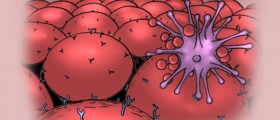
As the name itself suggests this type of cancer predominantly attacks the liver and it also goes under the name hepatoma. Having in mind the fact that the tissue of this organ is mostly made of cells (80%), it is no wonder that the greatest majority of this type of cancer primarily has its outset in those liver cells (90-95% of cases). In medicine this kind of cancer most often goes under a different name than stated above, i.e. it is called metastatic liver disease, or a more down to earth name – secondary liver cancer. What is in a way “astonishing” about this cancer type is that it occupies the fifth place on the list comprised of the most frequent cancer types. Unfortunately, the nature of liver cancer is rootless and the death rate is more than bleak, because people who develop it are bound to lose their lives within a year of its first occurrence. Another rather shocking fact is that, of all the cases world wide, around three quarters are almost considered a hallmark for the Southeast regions of Asia, primarily, Japan, Korea, Hong Kong, and China. One more region having difficulties with this type of cancer is also Africa, especially Mozambique and South Africa.
Treatments
Given the fact that it is fatal, the treatment is unfortunately bound to fail at one point, but once initiated, it depends upon the phase that the patient is in at that particular moment. What has been marked as the only possible treatment method is the liver transplantation procedure (if the tumor is less than 3 cm big). Though many doctors and surgeons would dispute the necessity for this kind of procedure, because many are convinced that such a tumor is best treated if removed surgically, another downside is that great many people suffering from liver cancer, suffer from the liver cirrhosis as well. This, furthermore makes the entire situation a lot more difficult because for this reason such people would not be able to endure the surgical procedure involving liver resection.
Sadly, numerous researches and studies, as well as treatments conducted up to this day, such as chemotherapy, ablation, proton beam therapy, have provided no tangible and beneficial results. This is predominantly the reason why no systematic comparisons of the studies dealing with the various treatment types have been further performed. Therefore it is difficult to determine if a particular treatment method has effects or not. One is considered to be beneficial primarily if the tumor has decreased in size as well as the alpha-fetoprotein in patient’s blood in comparison to the previous state of the previously mentioned prior to treatment.

















Your thoughts on this
Loading...